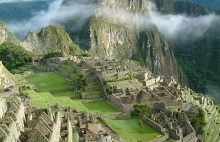Peru Travel Guide
Introducing Peru
Peru: Land of the Incas, the Amazon, the Andes, and the Alpaca
Peru’s history goes back twelve thousand years. Ancient cultures flourished along the Pacific Coast of Peru for centuries, but the Spanish arrived in 1522 and found the Incas. The Incas were an agricultural society that relied on farming and fishing for food, and used a reciprocity and redistribution system to trade with each other. Money didn’t exist in the Inca world. Peru was a loyal Spanish possession through the 18th century, but when silver mining production decreased, and the economy became more diverse, the end of Spanish control was eminent. In 1821 Peru declared their independence from Spain.
Native Peruvians began raising Alpaca thousands of years ago. Alpacas are related to camels and llamas, and are in the same classification as camels. Today Alpacas are raised for their fleece, as well as for breeding, but they were once considered a delicacy in Peru, so the Peruvian government instigated a law to protect the Alpaca from being traded or slaughtered. North American Alpaca breeding has grown into a very lucrative business, so Alpaca smuggling has become somewhat of a problem in Peru. The Andes Mountains run parallel to the Pacific and they divide Peru into three regions, which is the Pacific Coast Region, the Highlands Region of the Andes and Peru’s most famous mountain Machu Picchu, and the Jungle or Selva Region of the Amazon.
About Peru Today
Peru is divided into twenty five different regions, and the one province of Lima. Over twenty nine million people live in Peru, and forty five percent of them are Amerindians, thirty seven percent are Mestizo, and the rest of the population is white, black, and Asian. Peru land mass is spread out over 496,225 square miles, and the average per capita income is $9,223 per year. Peru’s currency is called the Nuevo Sol, and the country is enjoying substantial economic growth, although almost thirty seven percent of the population is considered poor. Peruvian exports, which include gold, zinc, copper, fish meal and textiles, generate a considerable amount of revenue for the government, and some investors say the Peruvian stock market is excellent investment option, now that Peruvian stock funds are available to foreign investors.
Peru in a Few Words
Peru is rich in tradition, culture, and history. The country is a modern version of an ancient way of life that continues to evolve into a progressive society that loves music, the arts, good food, and laughter. Peruvians love to entertain, and to be entertained, so the country shows its diversity in eclectic ways. There is so much to experience in Peru, it’s hard to know where to begin, but after one trip to the mountains or to a beach you realize that anywhere in Peru is the place to be in order to experience the meaning of freedom.


